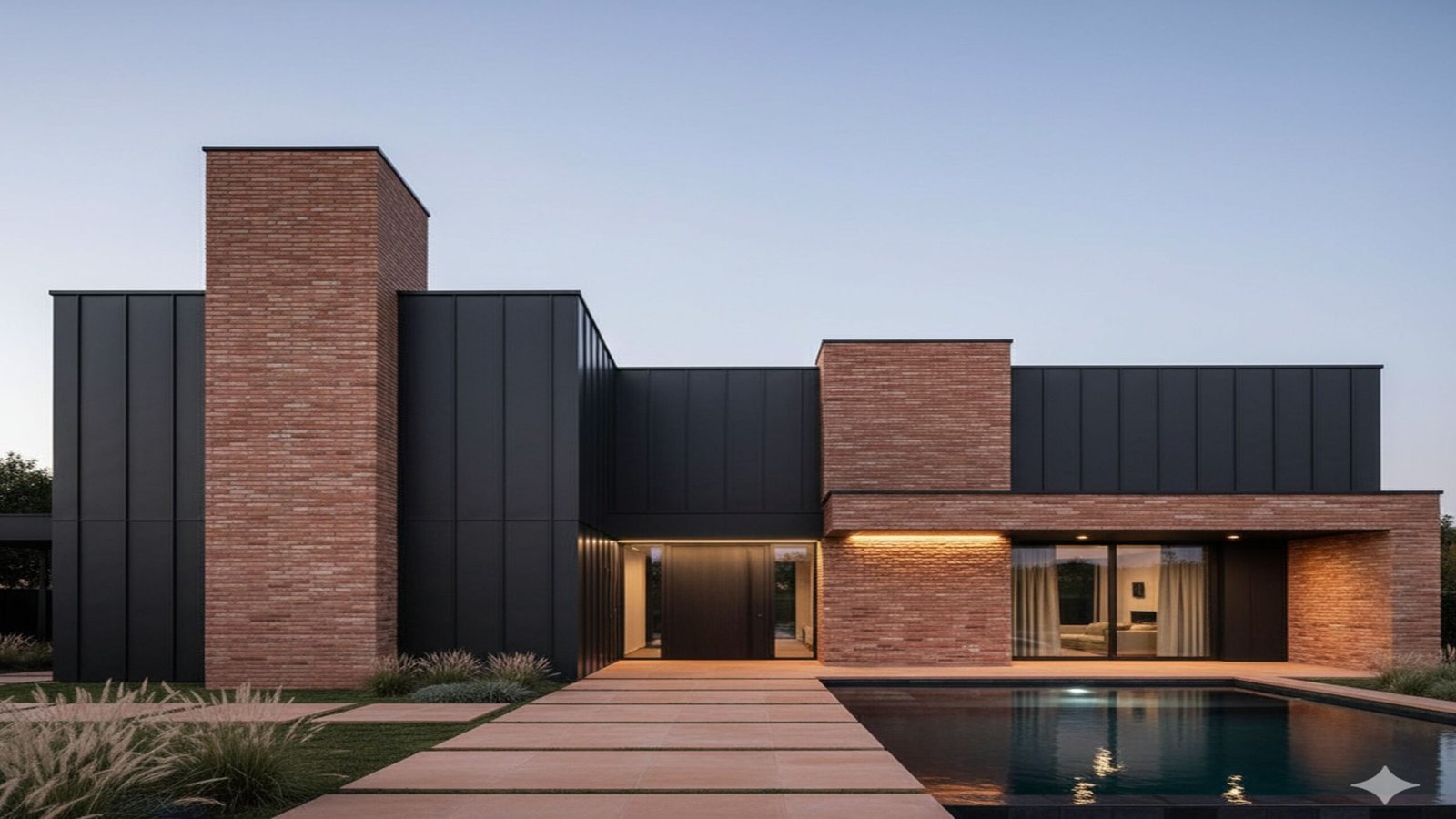In recent decades, modern architecture has undergone a phase of constant self-reflection. After an era in which concrete panels, glass facades, and high-tech composites dominated cityscapes, questions arise about how durable these materials truly are, how sustainable they prove to be, and what kind of legacy they leave behind. More and more, architects and investors are seeking solutions that not only convince functionally and aesthetically in the moment, but also have the ability to endure, evolve, and age with dignity. It is precisely within this process of re-evaluation that terracotta tiles are being rediscovered – as a material that carries both a historical legacy and contemporary potential.
What distinguishes terracotta is the fact that it is not a passing trend. This building material has accompanied human civilization for millennia – from Roman floors and wall claddings to medieval monasteries and today’s architectural projects, where tradition and modern expression merge. When we speak of handcrafted terracotta tiles today, it is not about a nostalgic return to the past, but about a material that still meets the most demanding criteria of modern architecture.
Craftsmanship as an Instrument of Control
Handcraft in architecture is often viewed with a certain sense of romanticism. Many see it as a return to craftsmanship, a nostalgic expression of something lost in mass production. Yet with terracotta, handcraft means not only tradition but also control. Unlike industrially manufactured tiles, where the process is entirely standardized, handcrafted terracotta allows architects and manufacturers to adapt the material to the specific context of the project.
The grain of the clay can be modified, the firing regime adjusted, and the surface finished either rustic or finely polished – depending on the requirements of the space. When designing a façade, the process is tailored so that the tile has low water absorption and can withstand multiple freeze-thaw cycles. For interior flooring, by contrast, the clay body remains more open, absorbs impregnation, and works perfectly in combination with underfloor heating. This is where the true value of handcraft becomes apparent: it allows the material to adapt to the space – and not the other way around.
Of course, there are natural limits. Every clay has its own chemical composition, a certain quartz content, a specific firing range, and natural porosity. These characteristics cannot be ignored or forcibly altered. Yet it is precisely in this balance between what the material inherently offers and what the human hand can shape that a tile with unique character emerges. It is a process in which technique, experience, and intuition merge into a result that is not uniform, but alive, adaptable, and enduring.
Aesthetics – Warmth and Identity in Space
The aesthetic value of terracotta lies not only in its color but in the entire atmosphere it brings to a space. Unlike industrial tiles, whose color comes from a surface coating, terracotta’s nuance arises from the clay itself and from the fire. Each tile therefore has its own tone, bears traces of the firing process, and changes depending on light, season, and use. A terracotta floor is never static – it is the drawing of the space, a surface that lives with the house or building.
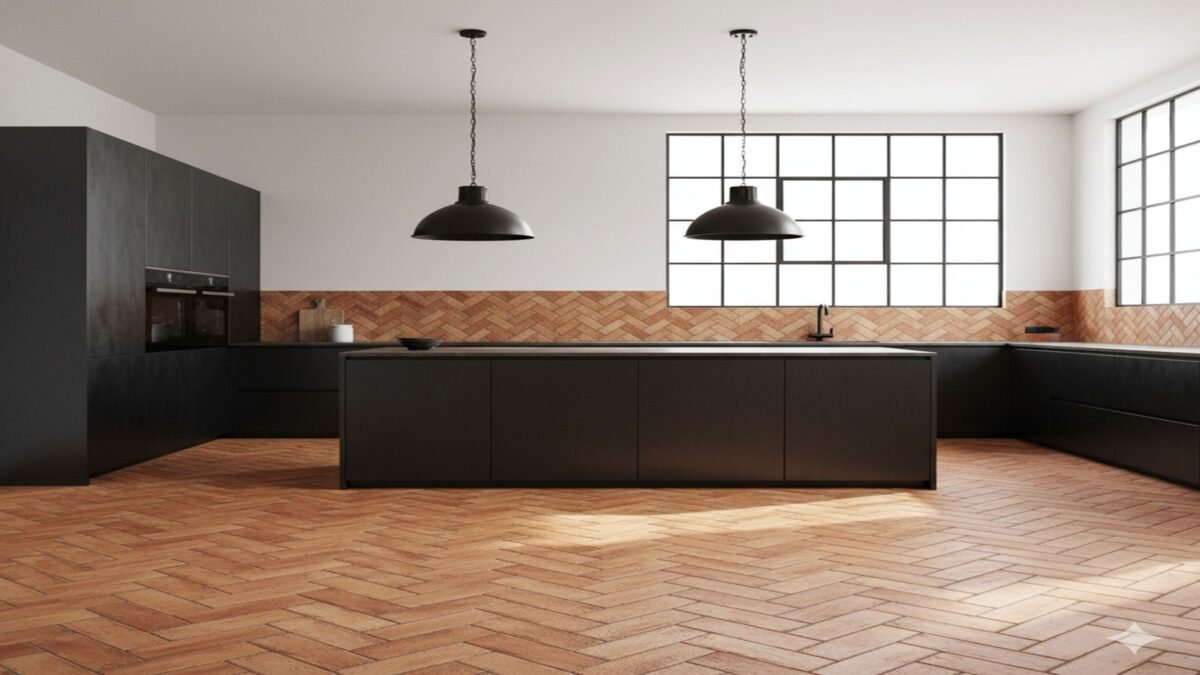
In minimalist interiors, where clean lines and cool materials such as concrete and glass dominate, terracotta introduces dynamism and warmth. The grid of joints provides rhythm, while small irregularities create visual interest – even in strictly reduced environments. As wall cladding, terracotta adds texture and depth that can hardly be achieved with industrial tiles. Even as an accent, it changes the perception of the space – giving it a human dimension, a natural vibration, and authenticity.
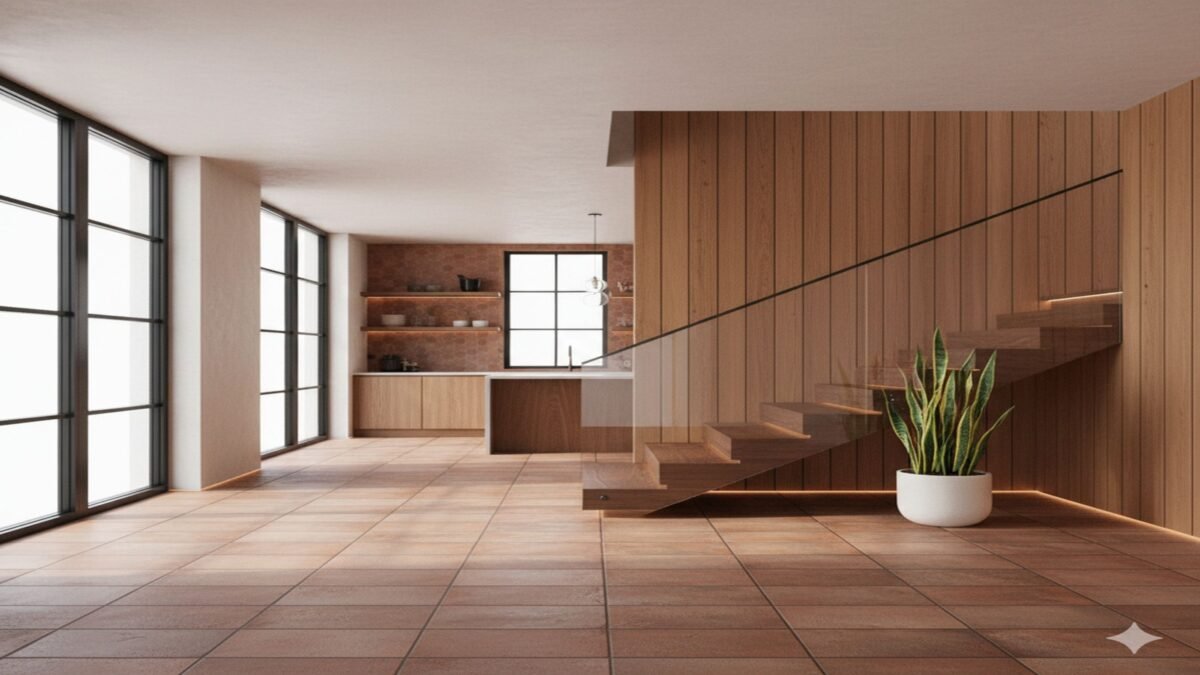
On facades, terracotta takes on an even more significant role. It is not just the outer layer, but the face of the building. Its surface – whether as slender terracotta slips or large-format slabs – gives architecture scale, rhythm, and expression that appear both natural and modern. In a building culture often shaped today by metal constructions and expansive glass surfaces, terracotta brings back the human dimension.
Technical Values and Durability
Architecture today is no longer satisfied with aesthetics alone. Materials must also meet technical requirements. Here, terracotta reveals its true strength. As a flooring material, it works perfectly with underfloor heating systems thanks to its thermal mass. It stores heat and releases it evenly – contributing not only to energy savings but also to a pleasant and stable indoor climate.
On interior walls, terracotta acts as a moisture regulator. It can absorb excess humidity and slowly release it again when the air is dry. This contributes to a healthier indoor climate – especially in urban apartments and public buildings, where air conditioning often dries out the air. Outdoors, properly fired terracotta demonstrates resistance to moisture and frost. Instead of deteriorating over time, it develops a noble patina and becomes more beautiful as it ages. In addition, its natural fire resistance makes it a safe choice in the context of fire protection.
Sustainability and Circular Significance
One of the main reasons why architects are once again turning to terracotta tiles today is their sustainability. At a time when the fight against excessive resource consumption is intensifying and the circular economy is gaining importance, terracotta proves to be a material that naturally meets these requirements. It consists solely of clay and water, without chemical additives and without complex processes involving extremely high energy consumption.
At the end of their life cycle, the tiles can be crushed and reintroduced into the construction process – either as an aggregate for new material or as part of the recycling cycle. This means they do not end up as waste that burdens the environment but instead return to the natural cycle. Their longevity is another decisive factor: a terracotta floor that lasts fifty or even a hundred years means that during this time no additional resources are needed for replacement, repairs, or new production.
The care of terracotta further underlines its natural character. It does not require aggressive cleaning agents but is preserved with mild, natural methods. This not only protects the tile itself but also reduces the use of chemicals that could be harmful to the environment in the long term.
Application in Modern Architecture
In practice, terracotta today finds its place in a wide variety of building types. In private homes, it brings warmth and naturalness that can hardly be achieved with industrial materials. In restaurants and hotels, it becomes an element of identity – a surface that conveys authenticity and a homely atmosphere to guests. In public buildings, it ensures durability and easy maintenance – a decisive factor in high-traffic environments.
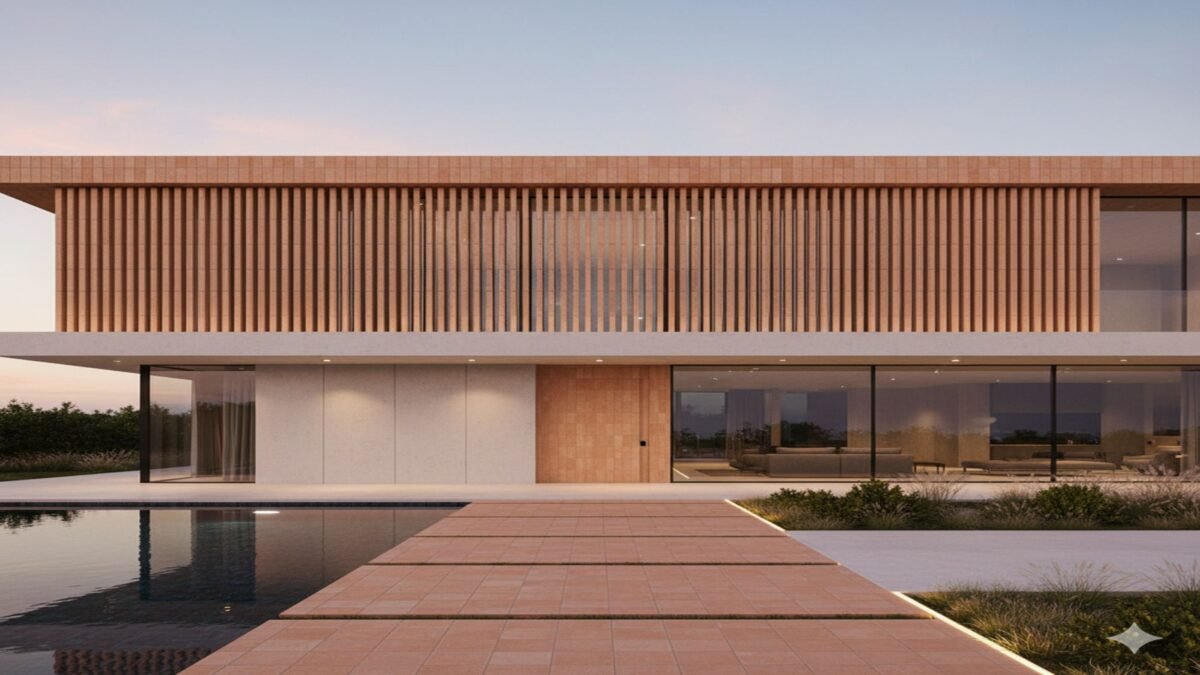
Transformation and Renewal – New Life for Old Buildings
One of the central approaches in modern architecture today is the transformation and renovation of existing structures, rather than demolishing them and replacing them with entirely new ones. This approach is not only an expression of ecological awareness but also reflects the desire to preserve the character of a place – not erasing history, but enriching it with new layers. In architectural practice, existing buildings are increasingly being upgraded – with new functions, new energy, and new expression. Here, the choice of material plays a decisive role, as not every material is equally suitable for connecting the old with the new.
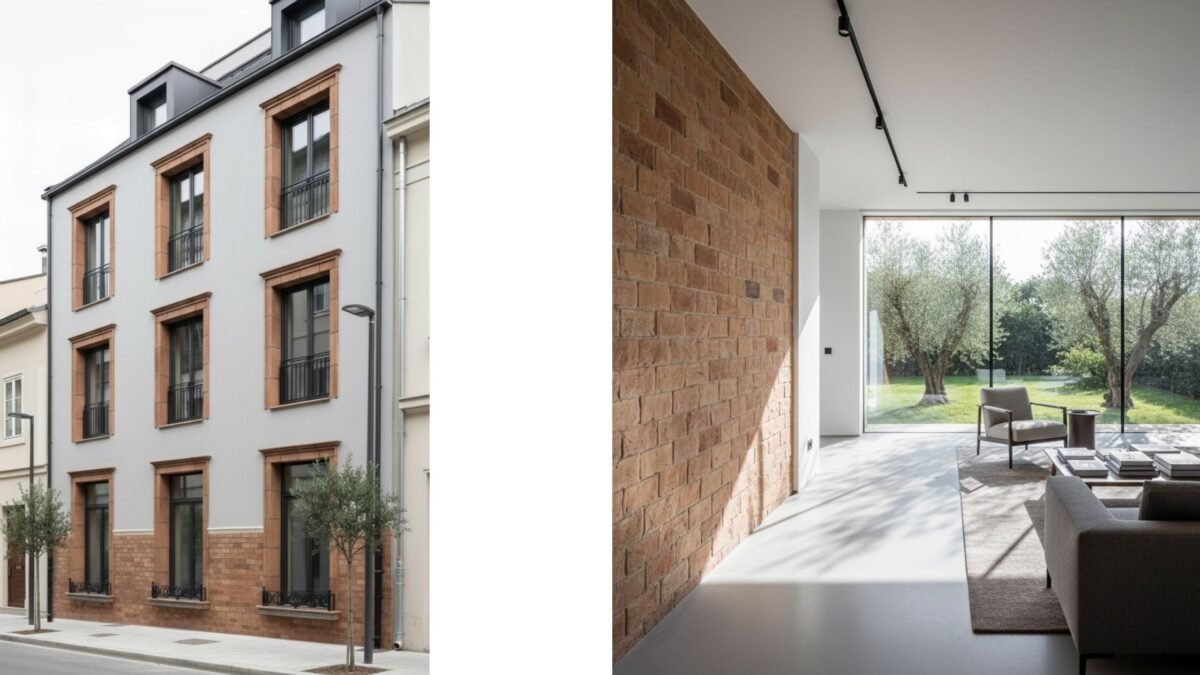
This is precisely where handcrafted terracotta tiles and terracotta elements gain special significance. Their natural character and the visible traces of fire and earth make them a material that integrates harmoniously into buildings of historic value. When used in the restoration of old houses, monasteries, or villas, they do not erase the past but complement it. They create continuity, giving spaces new life without covering the marks of time. In modern contexts, where clear and pure aesthetics are required, terracotta works equally well, as it can be crafted in different formats, colors, and finishes. In this way, it becomes a material that naturally connects the old and the new, underscoring the philosophy that not everything has to be newly built – but that existing structures can be renewed, transformed, and refined.
At Cotto Rustic, we not only offer our standard range but also custom-made terracotta tiles and elements that can be individually adapted in shape, size, and thickness – ideal for restoration, renovation, and modern architectural projects.
Conclusion – A Material that Ages with Dignity
Terracotta tiles are not a passing trend. They are a material that has endured for centuries and still has much to offer contemporary architecture. Indoors, they bring warmth and authenticity; outdoors, they provide durability and scale. In every context, they contribute to sustainability and the quality of space. Their strength lies in the fact that they do not follow short-lived fashions but always find their place in architecture that values longevity and true worth.
As a manufacturer of handcrafted terracotta tiles, I see every day how this material transforms projects. It is not merely a cladding, but part of an architectural narrative. Once integrated into a space, terracotta becomes a witness to life – a material that captures time, traces of use, and the play of light. And perhaps most importantly: terracotta is a material that becomes more beautiful as the years go by.
